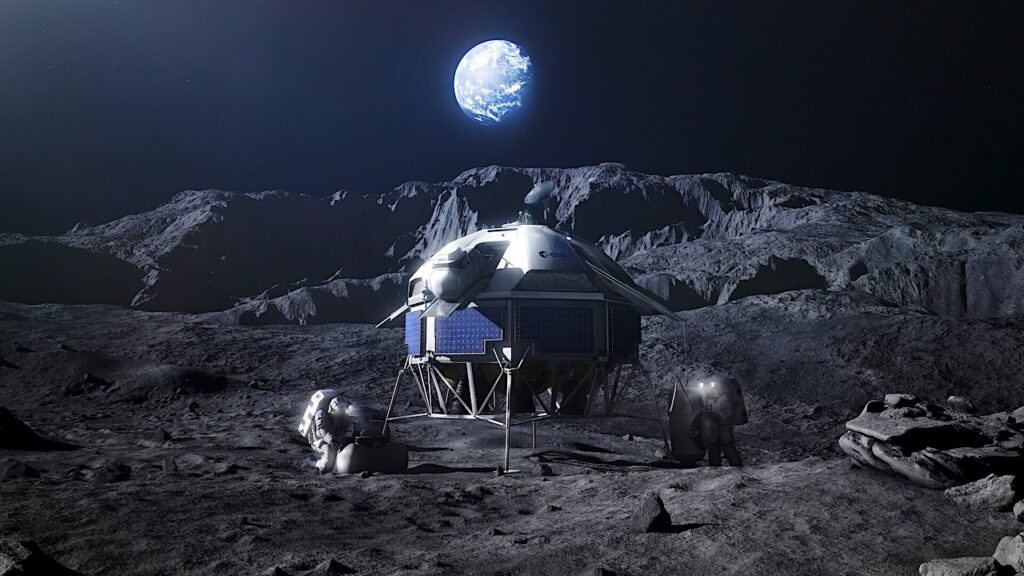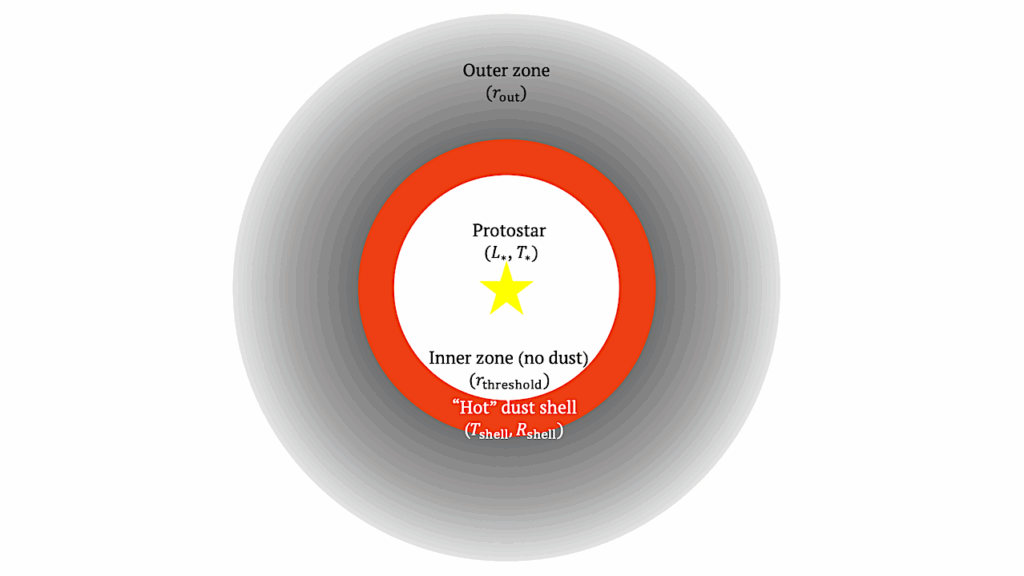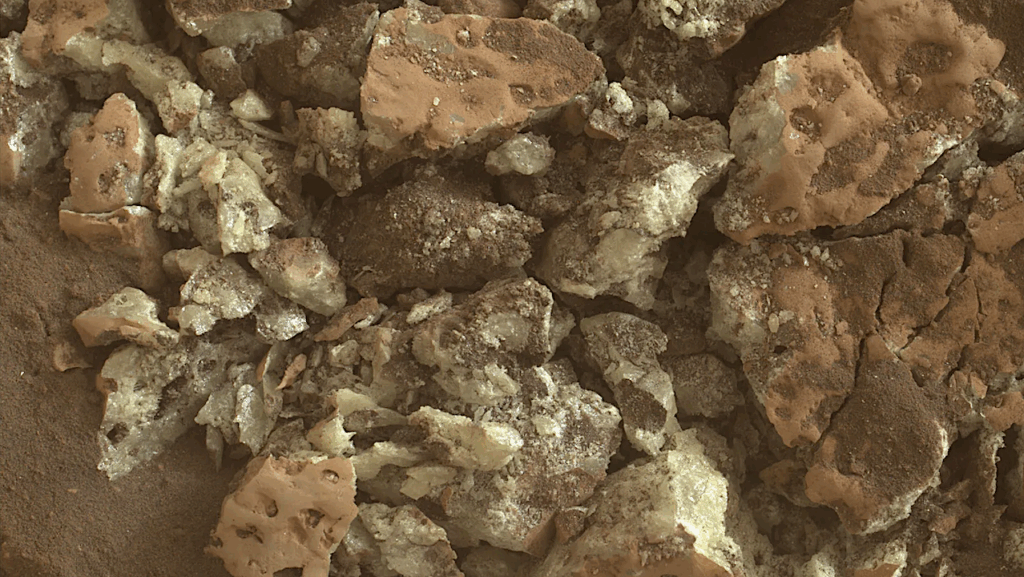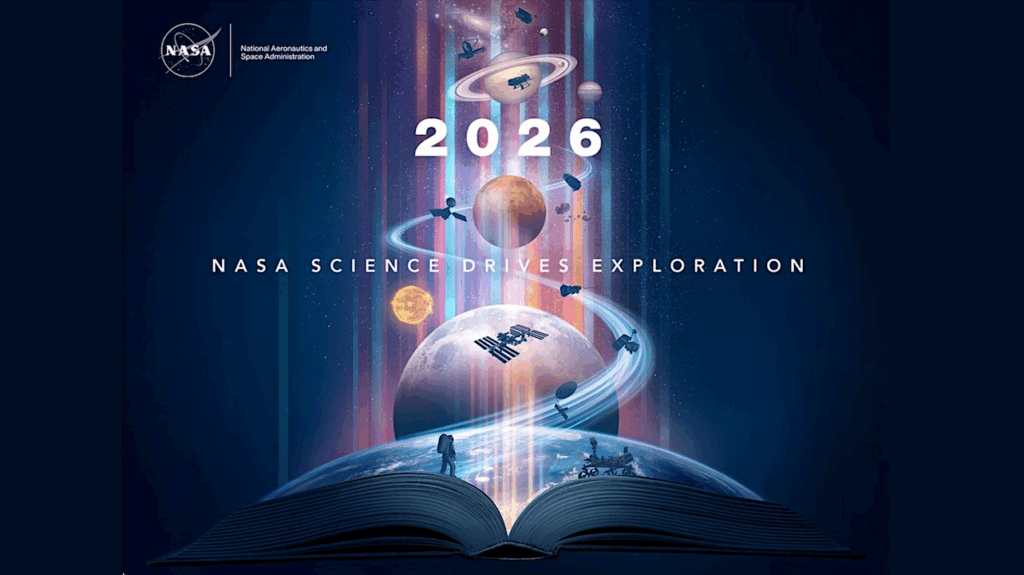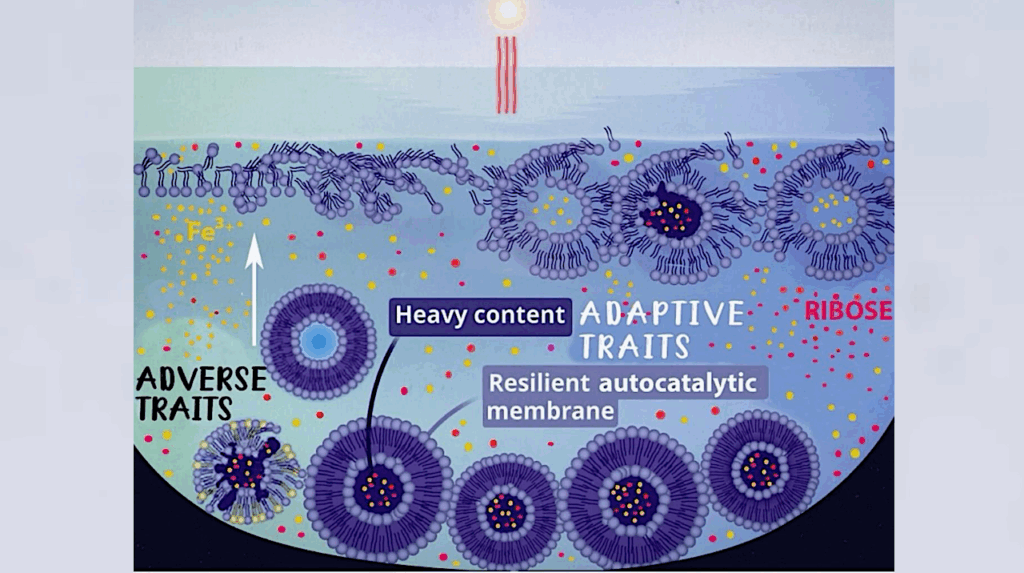Cosmic Dust Fertilization Of Glacial Prebiotic Chemistry On Early Earth
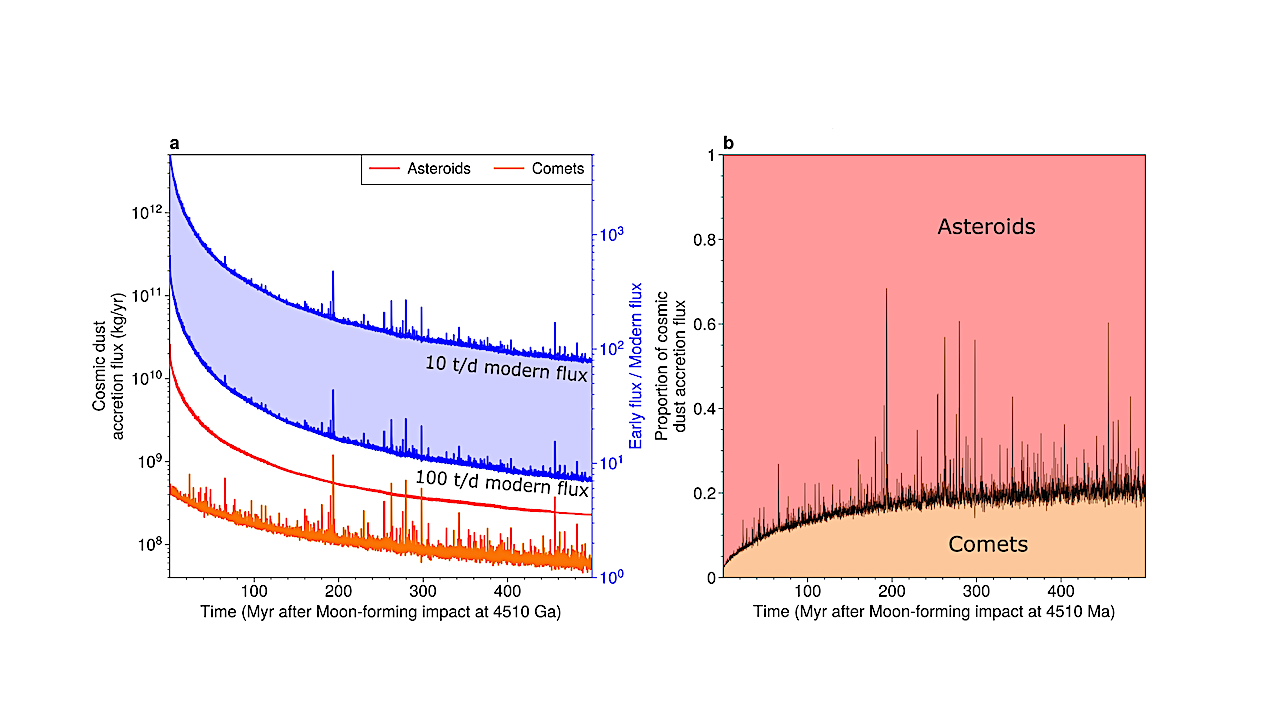
Earth’s surface is deficient in available forms of many elements considered limiting for prebiotic chemistry. In contrast, many extraterrestrial rocky objects are rich in these same elements. Limiting prebiotic ingredients may, therefore, have been delivered by exogenous material; however, the mechanisms by which exogeneous material may be reliably and non-destructively supplied to a planetary surface remains unclear.
Today, the flux of extraterrestrial matter to Earth is dominated by fine-grained cosmic dust. Although this material is rarely discussed in a prebiotic context due to its delivery over a large surface area, concentrated cosmic dust deposits are known to form on Earth today due to the action of sedimentary processes.
Here we combine empirical constraints on dust sedimentation with dynamical simulations of dust formation and planetary accretion to show that localized sedimentary deposits of cosmic dust could have accumulated in arid environments on early Earth, in particular glacial settings that today produce cryoconite sediments.
Our results challenge the widely held assumption that cosmic dust is incapable of fertilizing prebiotic chemistry. Cosmic dust deposits may have plausibly formed on early Earth and acted to fertilize prebiotic chemistry.
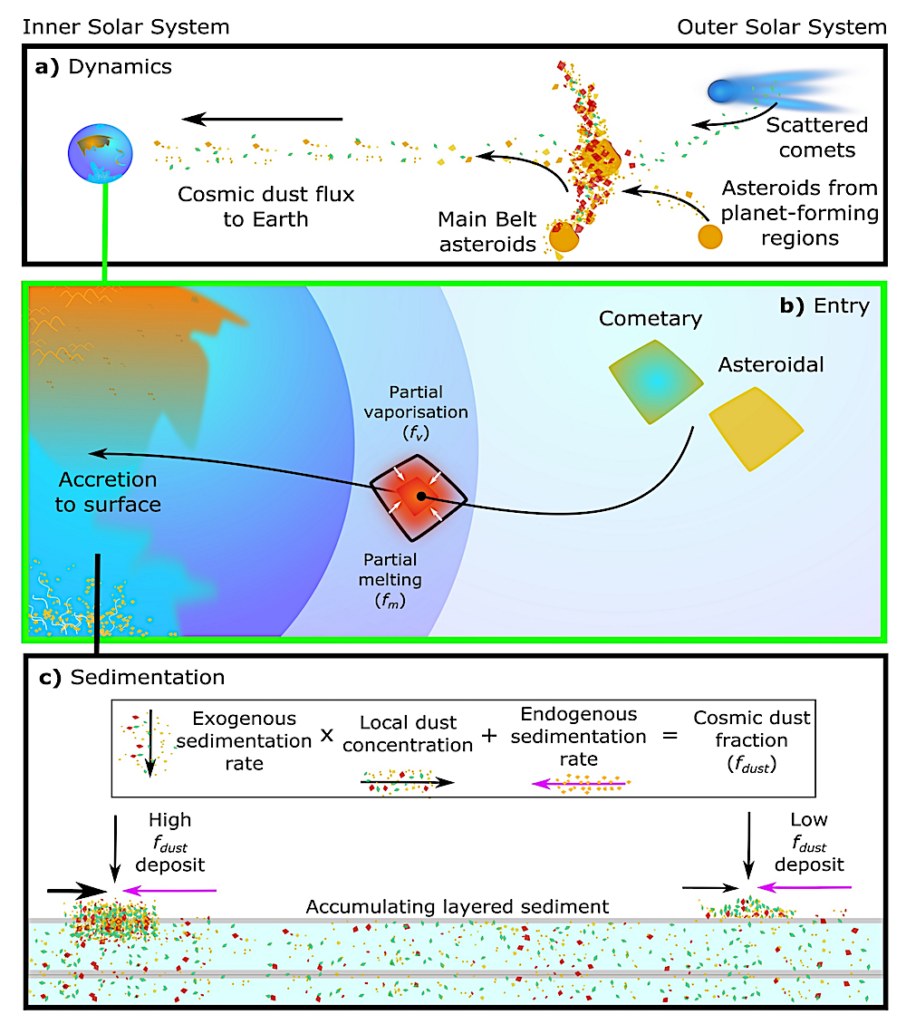
Delivery dynamics, atmospheric entry, and terrestrial sedimentation of cosmic dust. A schematic illustration of factors considered in this study related to the formation of terrestrial sediments rich in cosmic dust. a) Dynamical sources of cosmic dust grains. Comets (undifferentiated) scattered inward from the Outer Solar System disintegrate to produce dust particles. Asteroids predominantly generate dust through collisions. b) Atmospheric entry of cosmic dust involves partial melting (fm) and partial vaporisation (fv), both of which influence the final mass of cosmic dust per unit mass of total sediment in a given sedimentary environment (fdust, kg/kg). c) The relative abundance of cosmic dust within terrestrial sediments is set by the local sedimentation rates of cosmic dust versus terrestrial (endogeneous) sediment, with dust proportion therefore being maximised in areas of low endogeneous sediment production and the action of local sedimentary concentration mechanisms. — astro-ph.EP
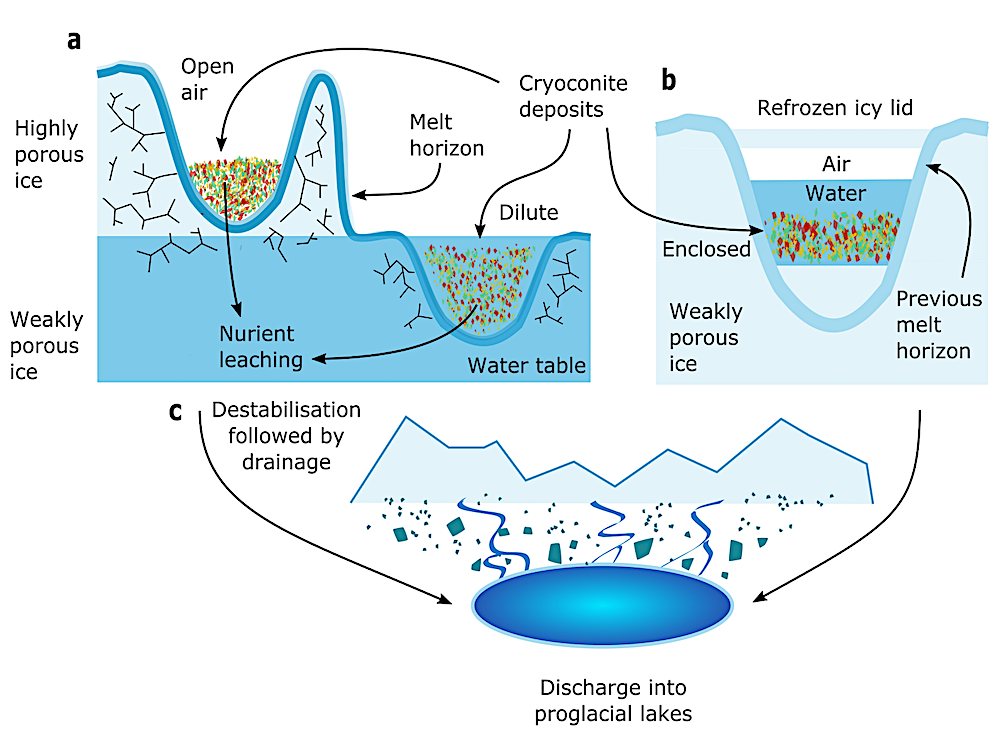
Schematic illustration of cryoconite sedimentary deposit rich in cosmic dust. a) Open air deposits may exist above the local water table, whereas dilute deposits lie in it. However, from a prebiotic chemistry perspective, both will suffer from nutrient leaching into a wider volume of diffuse water in the variably porous ice sheet. b) This is not the case for icy-lid cryoconite deposits, which are encased on all sides by weakly porous ice to cold impermeable ice. c) Regardless of their setting, cryoconite deposits are inherently unstable and most will be destabilised and drained within multi-annual timescales. Drained meltwater and cryoconite sediments will be transported in part to proglacial endorheic lakes, where longer term stockpiling of dust-derived species may occur. — astro-ph.EP
Craig R. Walton, Jessica K. Rigley, Alexander Lipp, Robert Law, Martin D. Suttle, Maria Schonbachler, Mark Wyatt, Oliver Shorttle
Comments: 5 figures
Subjects: Earth and Planetary Astrophysics (astro-ph.EP); Geophysics (physics.geo-ph)
Cite as: arXiv:2402.12310 [astro-ph.EP] (or arXiv:2402.12310v1 [astro-ph.EP] for this version)
https://doi.org/10.48550/arXiv.2402.12310
Focus to learn more
Journal reference: Earth. Nat Astron (2024)
Related DOI:
https://doi.org/10.1038/s41550-024-02212-z
Focus to learn more
Submission history
From: Craig Walton Dr
[v1] Mon, 19 Feb 2024 17:31:16 UTC (8,460 KB)
https://arxiv.org/abs/2402.12310
Astrobiology, Astrochemistry,


